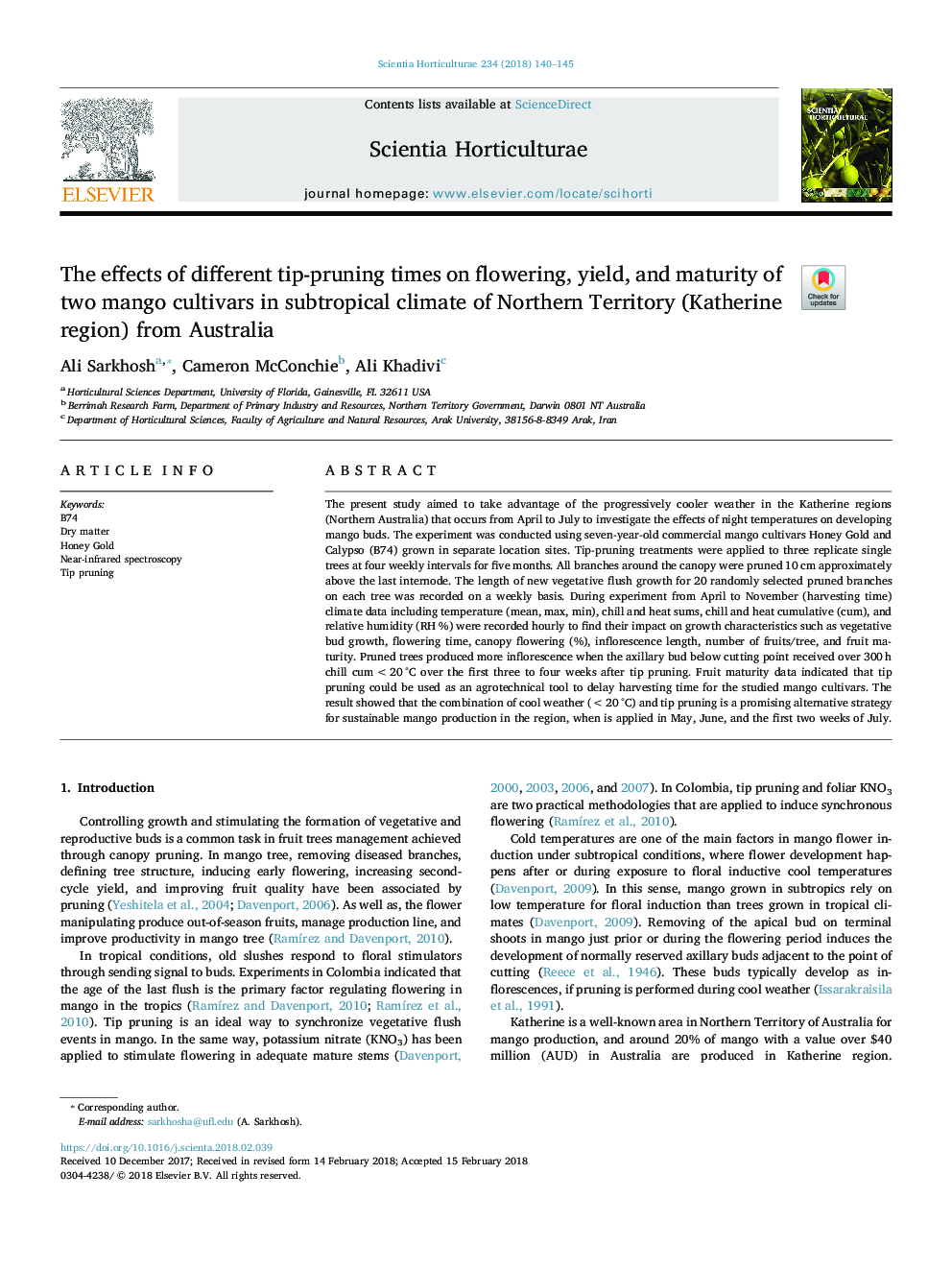| Article ID | Journal | Published Year | Pages | File Type |
|---|---|---|---|---|
| 8892756 | Scientia Horticulturae | 2018 | 6 Pages |
Abstract
The present study aimed to take advantage of the progressively cooler weather in the Katherine regions (Northern Australia) that occurs from April to July to investigate the effects of night temperatures on developing mango buds. The experiment was conducted using seven-year-old commercial mango cultivars Honey Gold and Calypso (B74) grown in separate location sites. Tip-pruning treatments were applied to three replicate single trees at four weekly intervals for five months. All branches around the canopy were pruned 10â¯cm approximately above the last internode. The length of new vegetative flush growth for 20 randomly selected pruned branches on each tree was recorded on a weekly basis. During experiment from April to November (harvesting time) climate data including temperature (mean, max, min), chill and heat sums, chill and heat cumulative (cum), and relative humidity (RH %) were recorded hourly to find their impact on growth characteristics such as vegetative bud growth, flowering time, canopy flowering (%), inflorescence length, number of fruits/tree, and fruit maturity. Pruned trees produced more inflorescence when the axillary bud below cutting point received over 300â¯h chill cum <20â¯Â°C over the first three to four weeks after tip pruning. Fruit maturity data indicated that tip pruning could be used as an agrotechnical tool to delay harvesting time for the studied mango cultivars. The result showed that the combination of cool weather (<20â¯Â°C) and tip pruning is a promising alternative strategy for sustainable mango production in the region, when is applied in May, June, and the first two weeks of July.
Keywords
Related Topics
Life Sciences
Agricultural and Biological Sciences
Horticulture
Authors
Ali Sarkhosh, Cameron McConchie, Ali Khadivi,
